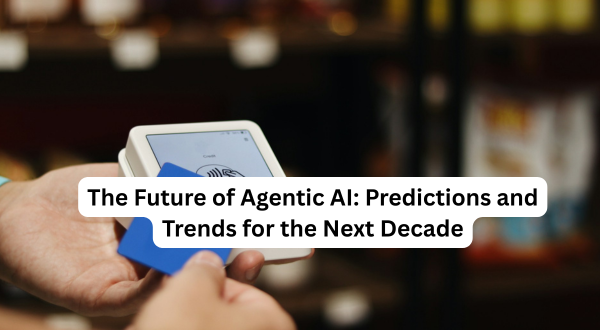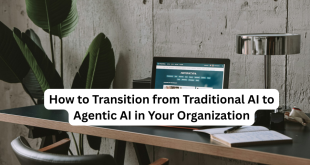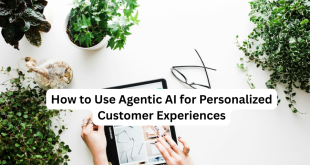As we stand on the cusp of a new era in artificial intelligence, Agentic AI—systems capable of autonomous decision-making and task execution—is poised to redefine how we interact with technology. Unlike traditional AI, which relies on human prompts and predefined rules, Agentic AI acts independently, adapting to dynamic environments and making decisions with minimal oversight. With its potential to transform industries, streamline processes, and even reshape societal systems, the next decade promises to be a pivotal period for this technology. Let’s explore the key predictions and trends that will shape the future of Agentic AI through 2035.
The Rise of Specialized AI Agents
One of the most exciting trends is the shift toward smaller, specialized AI agents. While large language models like those powering today’s chatbots are versatile, they’re also resource-intensive. The future lies in Micro LLMs—compact, task-specific models optimized for efficiency. These agents will handle niche roles, such as managing supply chain logistics, optimizing energy consumption in smart homes, or personalizing educational curricula in real-time. By 2030, Gartner predicts that 40% of enterprise AI deployments will involve specialized agents, reducing costs and energy demands while boosting performance.
Imagine a world where your personal finance AI agent negotiates bills, invests savings, and alerts you to market shifts—all tailored to your goals. These lightweight agents will run on edge devices, from smartphones to IoT sensors, making Agentic AI ubiquitous and accessible.
Integration with IoT and Edge Computing
The convergence of Agentic AI with the Internet of Things (IoT) and edge computing will be a game-changer. IoT’s network of connected devices generates massive data streams, and edge computing processes this data locally to reduce latency. Agentic AI will act as the brain, analyzing real-time data and making instant decisions. For example, in smart cities, AI agents could optimize traffic flow by adjusting signals based on live sensor data, cutting congestion by up to 20%, according to Deloitte projections.
By 2028, over 50% of enterprise data is expected to be processed at the edge, and Agentic AI will be central to this shift. From autonomous drones inspecting infrastructure to factory robots predicting maintenance needs, this integration will drive efficiency and innovation across sectors.
Autonomous Collaboration: The Multi-Agent Future
The next decade will see multi-agent systems become mainstream. These systems involve multiple AI agents working collaboratively, each with specialized roles, to tackle complex tasks. Picture a construction project where one AI agent designs blueprints, another manages supply chains, and a third oversees robotic builders—all coordinating seamlessly. This approach mirrors human teamwork but operates at unprecedented speed and scale.
By 2035, multi-agent systems could power 25% of enterprise workflows, per industry forecasts. Open-source frameworks like AutoGen are already enabling developers to build these ecosystems, and advancements in agent communication protocols will make them even more robust. This trend will redefine industries like healthcare, where AI agents could collaborate to diagnose patients, recommend treatments, and schedule surgeries.
Ethical and Regulatory Evolution
As Agentic AI takes on greater autonomy, ethical and regulatory frameworks will evolve rapidly. Key questions—Who is accountable when an AI agent makes a costly mistake? How do we prevent bias in autonomous decisions?—will drive global policy debates. By 2030, expect comprehensive AI governance laws, similar to GDPR for data privacy, mandating transparency, human oversight, and “kill switches” for critical systems.
Developers will prioritize explainable AI, ensuring agents can justify their decisions in human-understandable terms. Blockchain-based audit trails may also emerge to track AI actions, building trust in applications like finance and legal systems. These advancements will be crucial to scaling Agentic AI responsibly.
Democratization and Accessibility
The democratization of Agentic AI will accelerate as tools become more user-friendly. Platforms like no-code AI builders will enable non-technical users to deploy custom agents for tasks like marketing automation or customer service. By 2032, small businesses could account for 30% of Agentic AI adoption, leveling the playing field with larger corporations.
Open-source communities will play a pivotal role, with projects like Hugging Face and LangChain fostering innovation. Affordable hardware, such as AI-optimized chips in consumer devices, will further lower barriers, making Agentic AI as commonplace as smartphones are today.
Challenges on the Horizon
Despite its promise, Agentic AI faces hurdles. Energy consumption remains a concern, as training and running AI models contribute to carbon emissions. Innovations in sustainable computing, such as neuromorphic chips mimicking human brains, could mitigate this by 2030. Security is another challenge—autonomous agents are prime targets for cyberattacks. Robust encryption and AI-driven cybersecurity will be essential to protect these systems.
Public perception also matters. Widespread adoption will require overcoming fears of job displacement and loss of control. Education campaigns and transparent AI deployments will help build acceptance.
A Glimpse at 2035
By 2035, Agentic AI will be deeply embedded in daily life. Personal AI agents will manage schedules, health, and finances with uncanny precision. Businesses will rely on autonomous workflows to stay competitive, and global challenges like climate change will benefit from AI-driven solutions, such as optimized renewable energy grids. The economic impact could be staggering—McKinsey estimates AI could add $13 trillion to global GDP by 2030, with Agentic AI as a key driver.
The future of Agentic AI is not just about technology; it’s about reimagining how we live, work, and solve problems. As we move toward this autonomous frontier, the focus must remain on balancing innovation with responsibility, ensuring AI serves humanity’s best interests.
 UBUCH ubuch | Honest Tech Reviews & Tutorials for Everyone
UBUCH ubuch | Honest Tech Reviews & Tutorials for Everyone




